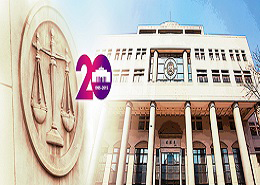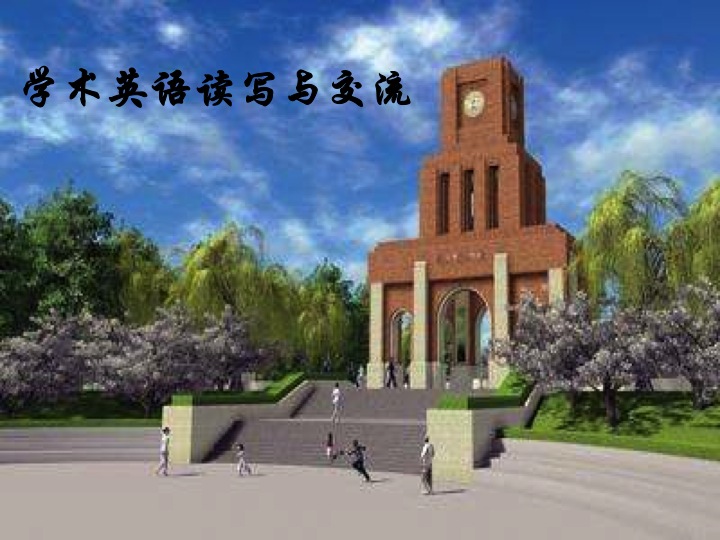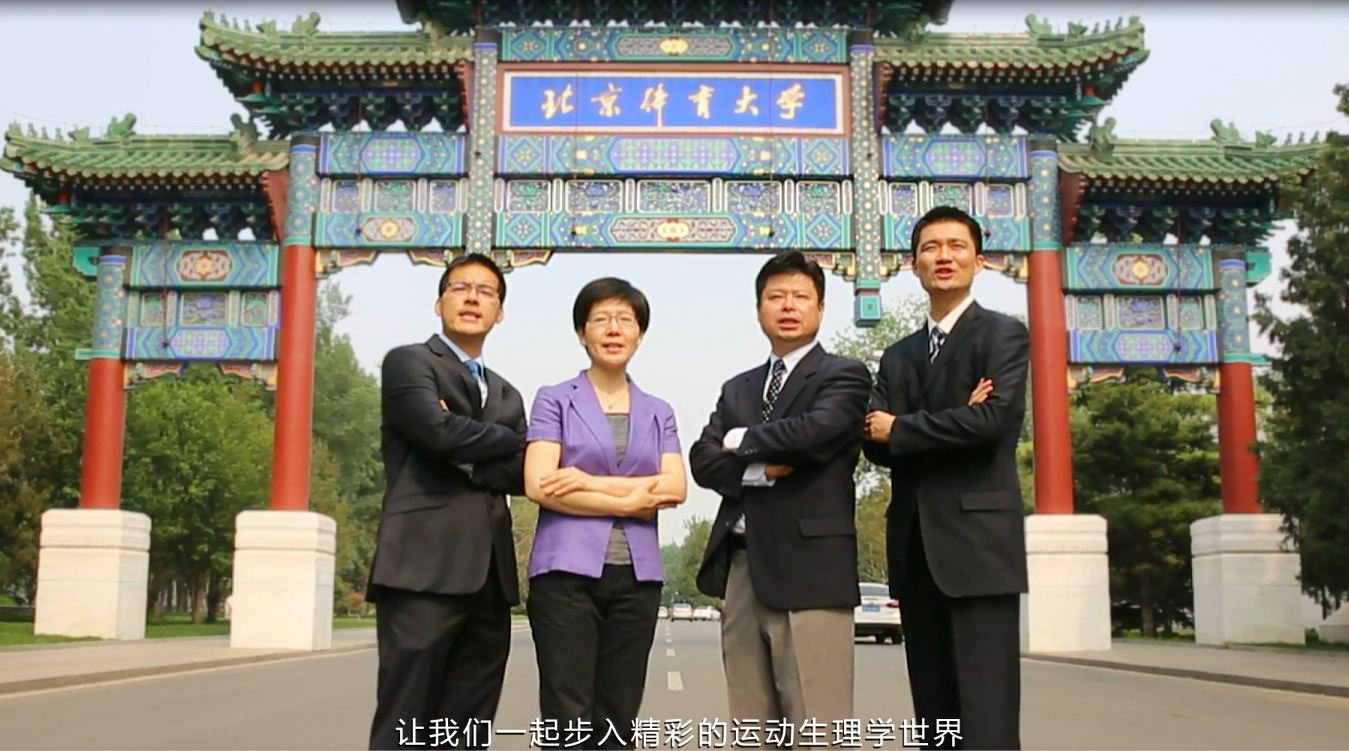
当前课程知识点:国际商务 > 十四、全球生产与物流 > 14.1全球生产与供应链管理 > 全球生产与供应链管理
同学们好
Hello everyone
我是云南财经大学国际工商学院的尹豪老师
I’m Dr. Yin Hao from the International Business School of Yunnan University of Finance and Economics
这节课
In this class
我们来学习国际商务课程有关生产与供应链的知识
we will learn the knowledge of production and supply chain of international business
这一章的学习内容有两个方面
In this chapter, there are two aspects of this learning content
以全球化的战略视角进行生产布局的决策
the first is decision-making of production layout
和全球供应链管理的决策
and the second, decision-making of global supply chain management
和全球供应链管理的决策
both are from the global strategic perspective
在全球生产布局的决策中要解决三个问题
There are three problems to be solved in the decision of global production layout
第一是按照价值创造原理中提高产品价值和降低产品成本的要求
The first question is whether the enterprise should concentrate production or decentralized production
企业是要集中生产
in accordance with the requirements of increasing product value
还是分散生产
and reducing product cost in the principle of value creation
第二是根据不同的影响因素如何进行国外生产的选址
The second is how to select locations for foreign production based on different influencing factors
第三是企业到海外从事生产活动是自己建厂生产
The third is whether the company to build its own factory or choose to outsource production
还是选择外包代工生产
when it is engaged in production activities overseas
在全球供应链管理的决策中要解决两个问题
There are two problems to be solved in the decision-making of global supply chain management
第一是在网络和信息技术的支持下
The first is how to manage the global supply chain with the support
如何管理全球供应链
of network and information technology
第二是在全球物流管理中如何配置和利用内部和外部的物流资源
The second is how to configure and utilize internal and external logistics resources in global logistics management
先让我们界定一下本章涉及到的重要概念
Let’s define the important concepts involved in this chapter
首先什么是生产
First of all, what’s production
它是指产品的制造和服务的提供活动
It refers to the provision activities of product manufacturing and service
请注意不仅产品是被生产出来的
Please note that not only products are produced
服务也同样是被生产出来的
but services are also produced
其次什么是供应链
Secondly, what is the supply chain
它是围绕核心企业
It is centered around the core enterprise
通过对信息流
through the control of information flow
物流
logistics
资金流的控制
and capital flow
从采购原材料开始
starting from purchasing raw materials
制成中间产品以及最终产品
producing intermediate products and final products
最后由销售网络把产品送到消费者手中
and finally sending the products to consumers through the sales network
将供应商
Suppliers
制造商
manufacturers
分销商
distributors
零售商直到最终用户连成一个整体的功能网链结构模式
retailers and end users are connected into a whole functional network chain structure model
而供应链管理是指从采购原材料
Supply chain management refers to the integration
到把产品送到终端消费者手中的包括物流
and coordination of a series of activities including logistics
采购
purchasing
运营和管理市场渠道在内的一系列活动的
operation and management of market channels from purchasing raw materials
整合和协调
to delivering products to terminal consumers
企业的生产和供应链管理要实现两个目标
The production and supply chain management of an enterprise must achieve two goals
第一是成本目标
The first is the cost goal
要确保从原材料采购到产品销售到客户的
to ensure that the total cost from raw material procurement to product sales
总成本尽可能低
to customers is as low as possible
第二是质量目标
The second is the quality goal
要保证产品和服务的质量
It is necessary to ensure the quality of products and services
建立全流程的质量标准
establish quality standards throughout the process
避免制造过程和供应链中出现有缺陷的原材料
and avoid defective raw materials
零部件和成品
components and finished products in the manufacturing process and supply chain
在实现这两个目标的过程中
International companies have more paths and methods
国际企业比国内企业具有更多的路径和方法
than domestic companies in the process of achieving these two goals
国际企业可以利用全球各地不同的要素禀赋条件
International companies can use different factor endowments
将生产的各个环节优化布局到全球各地
around the world to optimize the layout of each link of production to all parts of the world
使得各个环节成本最小化
minimizing the cost of each link
确保总成本最小
and ensuring the lowest total cost
同时
At the same time
国际企业可以在全球范围布局供应链
international companies can deploy supply chains on a global scale to ensure the reliability of upstream
使上下游的可靠性得到最大程度的保证
and downstream to the greatest extent
提高产品的质量
and improve product quality
成本和质量看似矛盾的两个目标
Although, cost and quality are two seemingly contradictory objectives
在生产和供应链管理的实践中被统一起来
they are unified in the practice of production and supply chain management
加强质量控制可以从三个途径降低成本
which can reduce costs in three ways by strengthening quality control
第一是减少了不合格产品的产出
The first is that it has reduced the output of unqualified products
提高了资源有效利用率和生产效率
improved the effective utilization of resources and production efficiency
使得单位成本降低
therefore reduced the unit cost
第二是降低了次品在厂内的返工和报废成本
The second is that it has reduced the cost of rework and scrapping of defective products in the factory
第三是降低了产品售后的保修成本
and the third is reduced the cost of product warranty after sales
在质量管理方面
In terms of quality management
企业需要做两类工作
companies need to do two types of work
第一是质量标准的选择或制定
The first is the selection or formulation of quality standards
第二是质量控制过程
and the second is the quality control process
国际企业在生产领域通常采用
International companies usually adopt
国际标准组织的ISO9000系列标准
the ISO9000 series standards of the International Standards Organization
并寻求该组织的质量标准认证
in the production field and seek the organization's quality standard certification
在质量控制过程中
In the process of quality control
企业会采用全面质量管理体系
companies will adopt a total quality management system
或六西格玛质量计划来确保产品质量达到要求
or Six Sigma quality plan to ensure product quality meets the requirements
除了上述两个目标
In addition to the above two goals
国际企业还面临着地区调适的压力
international companies are also facing the pressures for local responsiveness
即全球范围不同客户的差异化需求
that is, the differentiated demand of various customers around the world
以及客户需求的快速变化
and the rapid changes in customer demands
全球供应链管理能够使企业利用全球的资源
Global supply chain management can enable companies to take advantage of global resources
让企业更快地适应地区调适的压力
and help companies to adapt to the pressure of regional adjustments more quickly
企业在明确了上述目标后
Enterprises need to make decisions about where to produce after clarified the above goals
就需要作出在哪里生产的决策
When making such decisions
在决策时主要考虑国家地区因素
national and regional factors
技术因素和生产因素
technical factors and production factors should be mainly taking to consideration
在哪些国家和地区生产能够满足产品的低成本和高质量要求
The countries and regions in which production can meet the low-cost and high-quality requirements
这取决于各个国家和地区的要素成本
of products depend on the differences in factor costs
政治经济体系
political and economic systems
文化伦理等方面的差异
cultural ethics and other factors of various countries and regions
也取决于当地产业链的发展水平和产业集中程度
as well as the development level and the degree of concentration of the local industrial chain
还取决于贸易和投资壁垒的高低
and it also depends on the level of trade and investment barriers
以及汇率的稳定性
and the stability of the exchange rate
这些和国家与地区有关的因素在前面章节都有学习
These factors related to countries and regions have been studied in the previous chapters
在技术方面
In terms of technology
要根据不同行业各自产品的固定成本水平
decisions should be made based on factors of different industries
要根据不同行业各自产品的固定成本水平
such as the fixed cost level of the respective products
最小效率规模水平
the minimum efficient scale level
和技术柔性程度等因素来进行决策
and the degree of technical flexibility
固定成本高的产品
Products with high fixed costs
比如高端的半导体芯片
such as high-end semiconductor chips
大型商业飞机等产品
large commercial aircraft, etc.
就适宜集中大规模生产
are suitable for centralized mass production
由一个或少数几个工厂来供应全球市场
with one or a few factories supplying the global market
从而分担高昂的固定成本 获得竞争优势
So as to share the high fixed costs and gain the competitive advantage
固定成本低的产品
For products with low fixed costs
可以在靠近市场的地方分别建立工厂
factories can be established close to the market
以适应当地的需要
to meet local needs
并且规避汇率波动的不利影响
and avoid the adverse effects of exchange rate fluctuations
最小效率规模是指企业生产达到规模经济的产量后
The minimum efficient scale means that after the production reaches the output of the economies of scale
产出进一步增加不再能进一步降低单位成本
a further increase in output can no longer further reduce unit costs
如图所示的A点就是最小效率规模的产量
Point A as shown in the figure is the output of the smallest efficient scale
当一个工厂的最小效率规模相对于全球总需求越大
When the minimum efficient scale of a factory is larger relative to the total global demand
就越应该集中在一个或少数几个地点生产
the production should be concentrated in one or a few locations
等最小效率规模相对于全球总需求较小时
When the minimum efficient scale is relatively small relative to the global total demand
在多个地点靠近消费市场来生产在经济上是可行的
it is economically feasible to produce in multiple locations which are close to the consumer market
技术柔性反映出生产系统的灵活性
Technical flexibility reflects the flexibility of the production system
是企业面对地区调试压力发展起来的技术适应能力
and is the technological adaptability that enterprises develop in the face of regional debugging pressures
柔性制造技术是实现技术柔性的有效方法
Flexible manufacturing technology is an effective way to achieve technical flexibility
它使企业能够减少生产规模
It enables companies to reduce the scale of production
增加产品种类
increase product variety
同时降低单位成本
and reduce unit costs
柔性制造技术改变了
Flexible manufacturing technology has changed
规模经济使用标准化技术
the business model of economies of scale that use standardized technology
和标准化管理来大规模生产标准化产品以降低单位成本的经营模式
and standardized management to mass-produce standardized products to reduce unit costs
使大规模定制提供低成本的个性化产品成为可能
making it possible for mass customization to provide low-cost personalized products
例如
For example
柔性机器单元
flexible machine cells
工业机器人技术
industrial robot technology
3D打印制造技术都能够提高生产的技术柔性
and 3D printing manufacturing technology can all improve the technical flexibility of production
以大规模标准化的成本生产小规模个性化的产品
and produce small-scale personalized products at a large-scale standardized cost
在生产方面
In terms of production
要根据产品的特点
it is necessary to decide where to produce according to the characteristics of the product
生产工厂的选址
the location of the production plant
生产工厂的战略地位等因素来决策哪里生产
and the strategic position of the production plant
影响工厂选址的产品特点有两个
There are two product characteristics that affect the location of the factory
一个是产品的价值重量比
One is the product’s value-to-weight ratio
比值越大
The larger the ratio
运输成本占总价值的比例就越小
the smaller the proportion of transportation costs to the total value
该产品可以在最佳区位生产
The product can be produced in the best location
通过长途运输来供应全球市场
and supplied to the global market through long-distance transportation
价值重量比越小
The smaller the value-to-weight ratio
运输成本占总价值的比例就越大
the greater the proportion of transportation costs to the total value
产品应该靠近消费市场来生产
Products should be produced close to the consumer market
从而降低运输成本
to reduce transportation costs
另一个是产品是否满足共同的需要
The other product feature that can influence location decision is whether the product serves universal needs
这种需要在全世界都相同
which is the same need all over the world
比如
For example
钢铁
industrial products
大宗化学原料等工业品
such as steel and bulk chemical raw materials
华为手机
and consumer electronic products such as Huawei mobile phones
联想电脑等消费电子产品
and Lenovo computers
这些满足共同需要的产品地区调适的压力小
These products that meet common needs have little pressures for local responsiveness
可以集中在最佳区位集中生产
and can be concentrated in the best location for centralized production
生产工厂的选址有两种基本策略
There are two basic strategies for site selection of production plants
就是集中生产和分散生产
centralized production and decentralized production
国家因素
National factors
技术因素
technological factors
和产品因素共同决定了
and product factors jointly determine whether
是集中生产还是分散生产
to concentrate production or decentralized production
通常而言
Generally speaking
在以下七种情形时 采用集中生产较为合理
it is more reasonable to adopt centralized production in the following seven situations:
第一是国家之间的差异对生产成本有较大影响
Firstly, differences between countries have a greater impact on production costs
第二是贸易壁垒低
The second is low trade barriers
第三是同行业企业集聚在一个地区
The third is that companies in the same industry cluster in one area
并产生外部性
and generate externalities
第四是汇率保持稳定
The fourth is that the exchange rate remains stable
第五是生产技术的固定成本高
The fifth is that the fixed cost of production technology is high
最小效率规模很大并且存在柔性制造技术
the minimum efficient scale is large and the flexible manufacturing technology exists
第六是产品的价值重量比高
The sixth is that the value-to-weight ratio of products is high
第七是产品满足共同需要
The seventh is that products meet common needs
反之
On the contrary
采用分散生产较为合理
it is more reasonable to adopt decentralized production
生产工厂的战略定位对工厂的选址也有直接的影响
The strategic positioning of the production plant also has a direct impact on the location of the plant
在此分析6类工厂
We will analyze 6 types of factories
离岸工厂往往选择要素成本低的地点
the first is offshore factories which are often choose locations with low factor costs
源工厂需要在生产成本低
The source factory needs to be in a location with low production costs
基础设施发达
developed infrastructure
熟练工人多的地点
and many skilled workers
服务型工厂一般选择在有特殊政策的地点
Service factories generally choose locations with special policies
贡献型工厂会选择在有特殊要素的地区
Contributory factories will choose to use special elements in areas
利用特殊要素做出其他地方无法做出的贡献
with special elements to make contributions that cannot be made elsewhere
前哨型工厂一般靠近主要竞争对手
Outpost factories are generally close to major competitors
关键供应商
key suppliers
或者重要客户
or important customers
领导型工厂一般位于
Leading factories are generally located in areas
本行业的核心技术集中地区
where the industry’s core technologies are concentrated
下面我们来讨论企业获得零部件的途径是自制还是采购的决策
Let's discuss the company's decision to obtain parts by self-making or purchasing.
这一决策受成本和生产能力两个关键因素的影响
This decision is influenced by two key factors, cost and production capacity
成本因素包括原材料
Cost factors include the acquisition of raw materials
零部件和其他投入品的获取以及最终产品的成本
components and other inputs, and the cost of the final product
生产成本因素与机会成本有关
The productivity factor is related to opportunity cost
在成本和生产能力符合自制的要求后
After the cost and production capacity meet the self-made requirements
支持自制决策的因素还包括以下6种情况
the factors that support self-made decision-making include the following 6 situations:
第一是产品需要严格的质量控制
The first is that the outsourcing cannot meet the quality requirements
但是外包无法达到质量要求时
the product requires strict quality control
第二是企业专有技术不能与外包工厂共享
the second is that the company’s proprietary technology cannot sharing by outsourcing manufacturers
第三是企业存在过剩的产能
the third is that companies have excess capacity
外包会浪费产能
and outsourcing will waste capacity
第四是企业有必要控制生产过程的某些要素或工艺
the fourth is that it’s necessary for companies to control certain elements or processes
使得生产不能外包出去
in the production process so that production cannot be outsourced
第五是当供应商的持续供货能力得不到保障时
the fifth is that when the supplier's continuous supply capacity is not guaranteed
只能依靠自制
it has to rely on self-made
第六是行业或市场存在各种信任和承诺问题时
sixthly, when there are various trust and commitment problems in the industry or the market
企业就需要开展自制工作
enterprises need to carry out self-made
当支持自制的部分条件不具备时
When part of the conditions to support self-made is not met
企业应该考虑从外部采购
companies should consider purchasing from outside
影响是否外购的因素
The factors that affect whether to buy out are not exactly the same as the factors
与是否自制的因素不完全一致
that affect whether to do self-made
包括以下7种情况
There are 7 following situations included:
第一是当企业实施多来源政策
the first is that when the company implements a multi-source policy
需要更多的外部供应商
more external suppliers are needed
第二是企业缺乏制造产品或零部件的专业知识
the second is that the company lacks of expertise in manufacturing products or parts
而外包厂商具有该专业知识
and the outsourcing manufacturer has that expertise
第三是供应商具有为下游厂商配套的能力
the third is the supply suppliers have the ability to support downstream manufacturers
会促使下游厂商做出外包决策
which will prompt downstream manufacturers to make outsourcing decisions
第四是当产品的需求量小
fourth, when the demand for products is small
无法形成自制的规模效应
self-made scale effects cannot be formed
第五是为了策略性的库存管理
fifth, for strategic inventory management
也可能做出外购决策
it may also make outsourcing decisions
第六是对关键零部件的品牌偏好也促使企业
The sixth is that the brand preference for key components also prompts companies
做出外购决策
to make outsourcing decisions
第七是企业对非关键零部件的需求也多通过外购来满足
the seventh is that companies’ demand for non-critical components is mostly met through outsourcing
除了全球生产外
In addition to global production
物流
logistics
采购和分销也是供应链运营管理和职能的
procurement and distribution are also functions
组成部分
and components of supply chain operation management
物流是指计划
Logistics refers to the planning
实施和控制制造过程中使用的原材料
implementation and control of the effective flow and inventory activities of raw materials
零部件和产品的有效流动和库存活动
parts and products used in the manufacturing process
全球物流的核心内容包括全球配送中心
The core content of global logistics includes global distribution centers
全球库存管理
global inventory management
包装
packaging
运输和逆向物流等部分
transportation and reverse logistics
全球配送中心是全球供应链的中心
The global distribution center is the center of the global supply chain
也是全球供应网络的基础
and the foundation of the global supply network
它是一种允许产品定制的设施
It is a facility that allows product customization
通过配送中心可以实现在全球范围向批发商
Through the distribution center, specific products can be distributed to wholesalers
零售商和消费者配送特定的产品
retailers and consumers on a global scale
在全球市场上布局配送中心是一种战略选择
Deploying distribution centers in the global market is a strategic choice
要综合考虑将产品从工厂交付给客户的
It is necessary to comprehensively consider the total labor
劳动力和运输总成本
and transportation costs of delivering products from the factory to customers
做到总成本最小化
so as to minimize the total cost
全球库存战略必须有效权衡大规模生产
The global inventory strategy must effectively consider the relationship between the benefits
和靠近客户所产生的收益与成本的关系
and costs of mass production and proximity to customers
包装
Packaging
运输和逆向物流也直接影响到全球物流的成本和效率
transportation and reverse logistics also directly affect the cost and efficiency of global logistics
采购的对象是生产过程中使用的原材料
The objects of procurement are raw materials
零部件和制成品
parts and finished products used in the production process
采购的范围可以扩大到全球范围
and the scope of procurement can be expanded to a global scale
采购的核心活动包括制定全球采购战略
The core activities of procurement include formulating a global procurement strategy
和选择采购策略类型
and selecting the type of procurement strategy
跨国公司的全球采购战略包括
The global procurement strategy of multinational companies includes three strategies
从国内采购到国际采购
from domestic procurement to international procurement
再到全球采购的三种战略
and then to global procurement
又细分为五个层面
which is subdivided into five levels
采购策略类型就是要决策从哪里采购和如何采购
The type of procurement strategy is to decide where to purchase and how to purchase
可供选择的四个策略是国内内部采购
The four strategies available are domestic internal procurement
全球内部采购
global internal procurement
国内外部采购和全球外部采购
domestic external procurement and global external procurement
关于分销职能的学习将在营销章节中安排
The learning of distribution function will be arranged in the marketing chapter
明确了全球供应链的职能
After clarifying the functions of the global supply chain
还需要学习如何通过高效率的供应链管理来降低成本
it’s also need to learn how to reduce costs through efficient supply chain management
管理全球供应链包括四个主要方面
The management of the global supply chain includes four main aspects
分别是实施及时生产制度
namely the implementation of a timely production system
利用现代信息技术
the use of modern information technology
全球供应链的协调
the coordination of the global supply chain
和改进组织间关系
and the improvement of inter-organizational relationships
及时生产制度对减少库存环节的资金占用
The timely production system has a significant effect of reducing
及时生产制度对减少库存环节的资金占用
the capital occupation in the inventory link
和提高存货占款的流动性具有显著作用
and improving the liquidity of the inventory
也有利于提高产品质量
and it is also conducive to improving product quality
但是会因最大限度的减少库存而造成断供风险
However, the risk of supply outage will be caused by minimizing inventory
现代信息技术的使用和更新大大提高了管理效率
The use and update of modern information technology has greatly
现代信息技术的使用和更新大大提高了管理效率
improved the management efficiency
降低了供应链成本
reduced supply chain costs
也为全球供应链协调
and provided low-cost and high-efficiency means for global supply chain coordination
和组织间关系改进提供了低成本高效率的手段
and improvement of inter-organizational relationships
以上我们学习了
Above we have learned the knowledge of
跨国公司在全球生产和全球供应链管理方面知识
multinational companies in global production and global supply chain management
这一部分内容我们就学习到这里
This part of the content ends here
感谢大家参加
thank you for participating
-1.1 全球化的概念和内容
-1.2 全球机构和全球化的推动力
-1.3 全球经济的变化和逆全球化的动因与现象
-第一章课后练习
-2.1 政治体制
--政治体制
-2.2 经济体制
--经济体制
-2.3 法律体系
--法律体系
-2.4 经济发展的决定因素
-2.5 经济转型的本质和经济变革的意义
-第二章课后练习
-3.1 跨文化差异的本质和影响因素
-3.2 跨文化差异的影响因素、文化维度和文化演进
-3.3 商务伦理问题的本质、起因和哲学路径
-第三章课后练习
-4.1区域经济一体化的概念及层次
-4.2区域经济一体化的争论
-第四章课后练习
-5.1国际贸易理论
--国际贸易理论
-第五章课后练习
-6.1国家干预国际贸易的原因
-6.2国家干预国际贸易的措施
-第六章课后练习
-7.1投资的现状
--投资的现状
-7.2投资的理论
--投资的理论
-7.3投资利弊与政府干预
-第七章课后练习
-8.1外汇市场
--外汇市场
--外汇市场案例学习
--外汇市场案例分析
-8.2货币体系
--货币体系
-8.3全球资本市场
--全球资本市场
-第八章课后练习
-9.1国际企业的战略
--国际企业的战略
-9.2战略目标
--战略目标
-9.3环境压力
--环境压力
-9.4战略选择
--战略选择
-第九章课后练习
-10.1组织构架与组织结构
-10.2控制、奖励、流程与文化
-10.3战略与组织构架
--战略与组织构架
-10.4组织变革
--组织变革
-第十章课后练习
-11.1市场进入战略
--市场进入战略
-11.2战略联盟
--战略联盟
-第十一章课后练习
-12.1进出口贸易与对等贸易
-第十二章课后练习
-13.1产品策略和分销策略
-13.2沟通策略、定价策略和新产品研发
-第十三章课后练习
-14.1全球生产与供应链管理
-第十四章课后练习
-15.1国际人力资源管理的作用
-15.2人员配备、培训与管理
-15.3业绩评估与薪酬
--业绩评估与薪酬
-15.4国际劳工关系
--国际劳工关系
-第十五章课后练习
-16.1国际会计
--国际会计
-16.2国际企业财务管理
--国际企业财务管理
-第十六章课后练习



